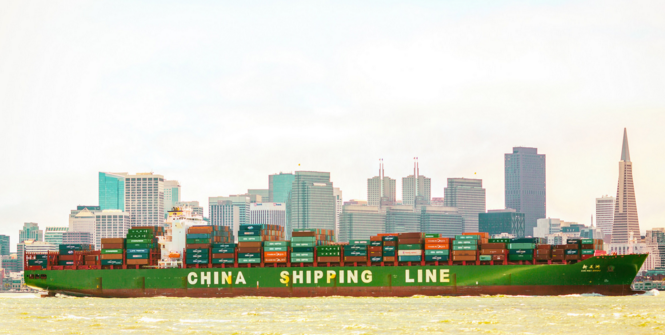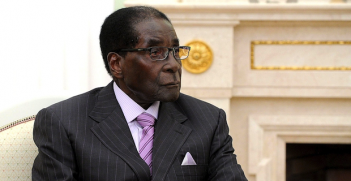One Belt, One Road: A Threat to China?

China’s economic prowess is often the first impression people have of the world’s most populous country. Likewise of its ambitious “One Belt, One Road” initiative (OBOR). Such a misconception can be deceiving since its economic success was heavily built upon low-end industries and planned economy. The boldness of the initiative may be a desperate move to exhaust China’s excess industrial capacity rather than expanding its sphere of influence.
While the OBOR strategy was believed to be an ambitious initiative to exert its political influence – often dubbed the Chinese version of the Marshall Plan – the current state of China’s economy suggests otherwise. The OBOR initiative serves the purpose of consuming excess industrial capacity in low-end industries to cope with the deteriorated global economy. This encompasses the two financial institutions founded by the Chinese government: the Asia Infrastructure Investment Bank (AIIB) and the Silk Road Fund. Both institutions provide loans for participating countries, funding their infrastructure projects in order to provide enough time for the domestic state-owned enterprise to reform.
There is little doubt that China is an economic hegemon. What is unclear is whether it has the means to retain its position as a leading economy. Despite the significant economic deregulation since the Open Door Policy, bureaucracy still plays a major role in the Chinese economy through its state-owned enterprises (SOEs). In addition, excess industrial capacity is one of several consequences of the prevalent bureaucratic atmosphere.
A product’s price depends on its scarcity, even if the product is inexpensive. Under China’s semi-planned economy, SOEs act as private corporations that seek opportunity while following the party’s commands. During the time when GDP was the only unit to measure the achievements of provincial governments and SOEs, building unnecessary infrastructure became the fastest and most direct way to inflate their value and thus satisfy the central government’s economic objective. Town after town was built, with few residents, just to serve government officials’ desires.
While economic development in China operates at full speed, provincial governments can implement a “borrow to build“ strategy to inflate economic performance. When taking into consideration the credibility of the provincial government and the oversupply of Renminbi (RMB), lending to the provincial government or SOEs can seem like a guaranteed investment. But if the economy slows down at an unprecedented rate, as it did in the Global Economic Crisis (GFC), the sudden break in the supply of funds will trigger a wave of bankruptcies in the Chinese manufacturing industry. This is especially true in low-end industries such as steel and concrete, regardless of whether the affected industries are SOEs or private firms. The capacity used to satisfy demand before the GFC therefore becomes excessive and redundant. Consequently, the OBOR initiative is an appropriate answer to this as it expands the demand for these industries to countries outlined in its framework. The construction of infrastructure both abroad and domestically can ease the grim situation by consuming massive quantities of concrete and steel.
The Sino–Thai high-speed railway is a useful example of how these projects are financed. The cost of the railway, with a total length of 867 kilometres connecting China and Thailand, is estimated to be 9.7 billion Yuen. A memorandum of understanding was signed on 3 December 2015 outlining several basic details of the project, including an agricultural agreement that stated China will purchase two million tons of rice and 20,000 tons of rubber from Thailand. In terms of financial value, the compensation for the railway might not even be sufficient to break even, considering that China must also provide financial support in the early stages after the railway is completed.
The solution to the financing issue of the high-speed railway between China and Thailand might be an effective one, yet it is not sustainable, since even SOEs require profit to operate. The Silk Road Fund and the AIIB might be the solution to the funding problem as China also needs a secure way to invest. Indeed, these infrastructure projects are not as secure as US government bonds. However, it is neither too late nor too ambitious to diversify investment on a national scale. These two Chinese-backed international financial institutions, especially the AIIB, are responsible for financing governments in the developing countries outlined in the OBOR framework. With such a high degree of international involvement, risks like the refusal or inability to repay loans can be greatly reduced. This is due to the fact that it is an international venture composed of governments of different countries, similar to the World Bank.
The OBOR initiative can be seen as the government’s solution to exhausting excess industrial capacity, which in turn has become the largest threat to both the Chinese economy and regime. Given its non-democratic nature, it would be wishful thinking to expect China could exert its political will upon other governments while its most powerful source of legitimacy – its economic standing – is at stake. The OBOR strategy is the key to China confronting its excess industrial capacity and avoiding the possibility of an economic hard landing. It is unwise for the Chinese government to demand political deeds while seeking international cooperation. Therefore, in the short term, the OBOR strategy will primarily impact basic and advanced infrastructure bidding. Given that excess industrial capacity is already such a headache for China, it raises the question of whether building infrastructure within a framework of international joint ventures really make sense?
Alex Cheung studies International Relations at Curtin University. This article is published under a Creative Commons Licence. It may be republished with attribution.




